It’s Fieldays time again (my excuse for not writing something ‘solid’!). This time round the theme is ‘my land, our environment’. Many of my colleagues are doing work on issues directly related to this theme – & they have an international reputation for the excellence of what they do.
Anyway, the challenge was to represent some of this on the stand – again, with the expert help of Adam from Station Creative. And to do it in a way that tells a bit of a story. So…
There’s a PhD student in Psychology who’s looking at learning in cows. Specifically, whether cows can learn to recognise signs/symbols & follow these through a maze. This may sound a bit odd, but there’s serious science underlying it. Just up the road from the University, DairyNZ is studying the use of robotic milking machines, where the cows take themselves to be milked when they’re ready. But to do that, they have to be able to find their way to the robots, through what can be a quite complex system of races. So Tania’s work is directly relevant to this, and has the potential to help enhance farm management practices & potentially their profitability. (And gave us the opportunity to re-use the back end of last year’s cow.)
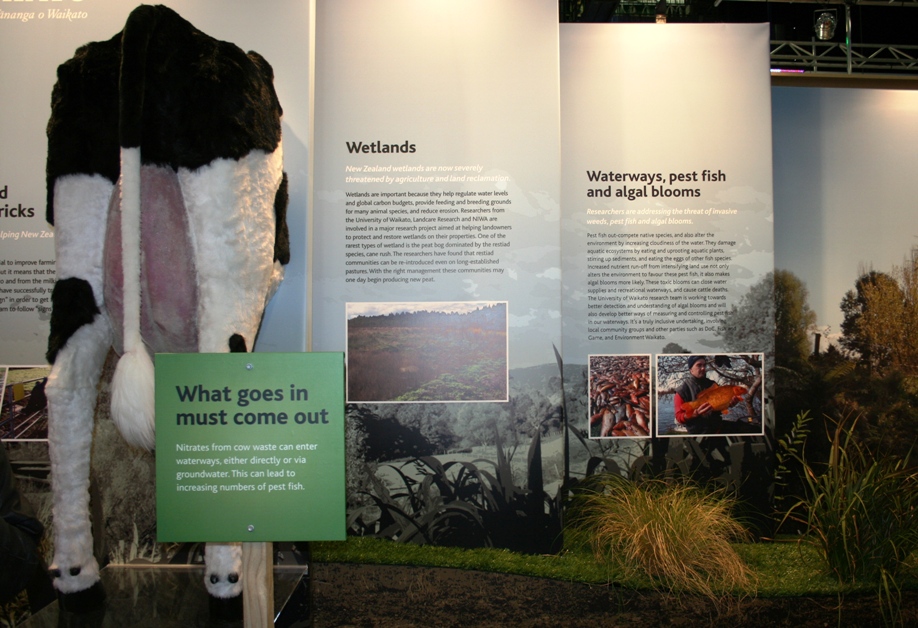
What’s more, this led nicely to the products of the cow’s back end, & the effects these can have on native ecosystems. Agricultural run-off poses significant problems for our waterways, because the nutrients they contain alter the environment to favour pest fish as well as making algal blooms more likely. The toxic algal blooms can force the closure of water supplies and recreational waterways, and cause cattle deaths. And the fish – species such as koi carp, perch, rudd, & feral goldfish – outcompete our native species and damage aquatic ecosystems by eating & uprooting plants, stirring up the sediments (have you ever watched a koi feeding?), & eating other fish species’ eggs. This is the focus of one of the story boards in the picture below – the other is on wetlands, the subject of some collaborative research between colleagues in my School & scientists in Landcare. There are two big fishtanks there too, one with koi & other invasive species in it, & the other with inanga & other native fish. (I love the way Adam’s made it look like the tanks are a continuation of the image behind them.)
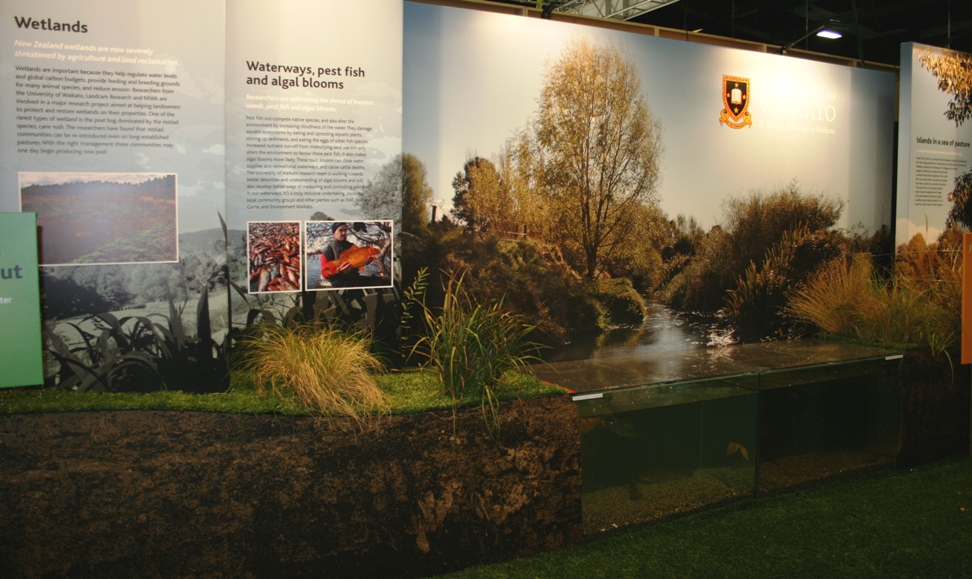
Another research project focuses on the restoration & conservation of pockets of native bush on farmland. There’s not a lot of lowland native forest left around the Waikato, so conserving these remnants is essential if we’re to maintain what remains of the region’s original biodiversity. This joint project, with Landcare scientists and others, is looking at the benefits of fencing off these patches of bush. Their data suggest that fencing is great, but not the whole story – we stil need to keep up the pest control as well. Otherwise mammalian predators, such as possums & rats, move into the bush patches and wreak havoc on the native birds living there.
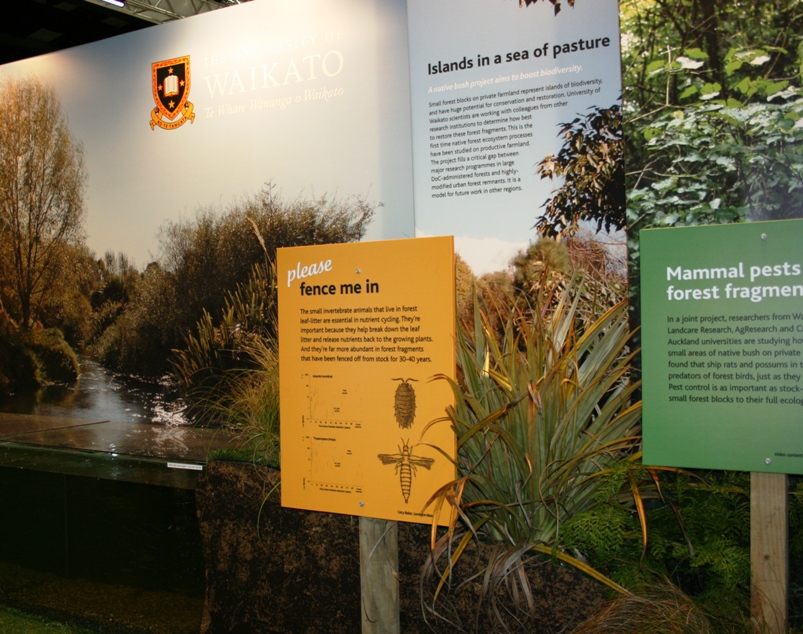 But it’s not just the countryside that our researchers focus on. My friend Bruce Clarkson leads a team aiming to restore some of the native ecosystems in and around Hamilton itself, in an urban restoration project. Some of their work is on restoring gully ecosystems – Hamilton has a lot of these – while another part of it centres on the Waiwhakareke project: the restoration of Waiwhakareke, or Horseshoe Lake. The concept of urban restoration has a lot of community support, with large numbers of people working on their local gullies or lending a hand to plant native species round the lake.
But it’s not just the countryside that our researchers focus on. My friend Bruce Clarkson leads a team aiming to restore some of the native ecosystems in and around Hamilton itself, in an urban restoration project. Some of their work is on restoring gully ecosystems – Hamilton has a lot of these – while another part of it centres on the Waiwhakareke project: the restoration of Waiwhakareke, or Horseshoe Lake. The concept of urban restoration has a lot of community support, with large numbers of people working on their local gullies or lending a hand to plant native species round the lake.
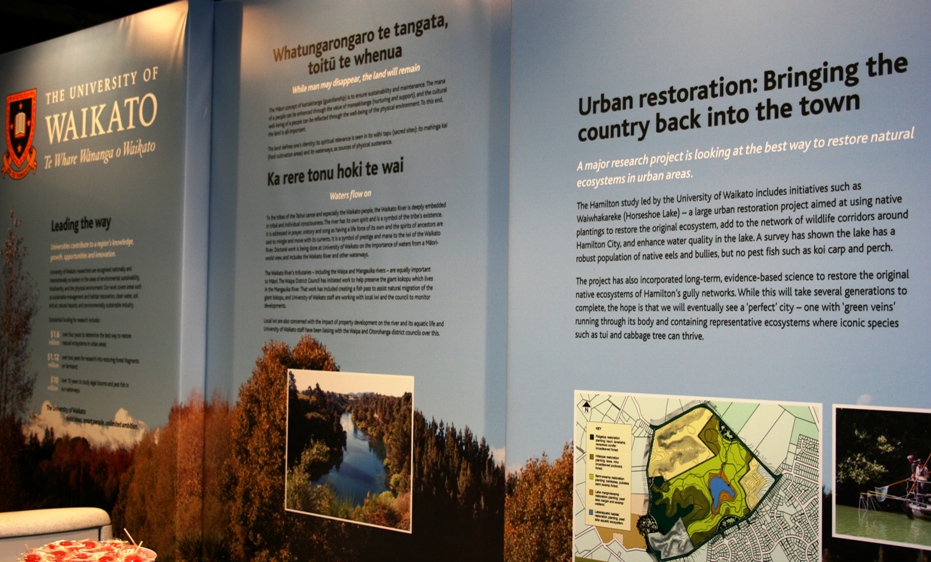 It’s been great to have the opportunity to tell a story like this – not least because it’s so different from what I usually do. And it’s a real privilege to work with the design team and the researchers on bringing the project to fruition 🙂
It’s been great to have the opportunity to tell a story like this – not least because it’s so different from what I usually do. And it’s a real privilege to work with the design team and the researchers on bringing the project to fruition 🙂
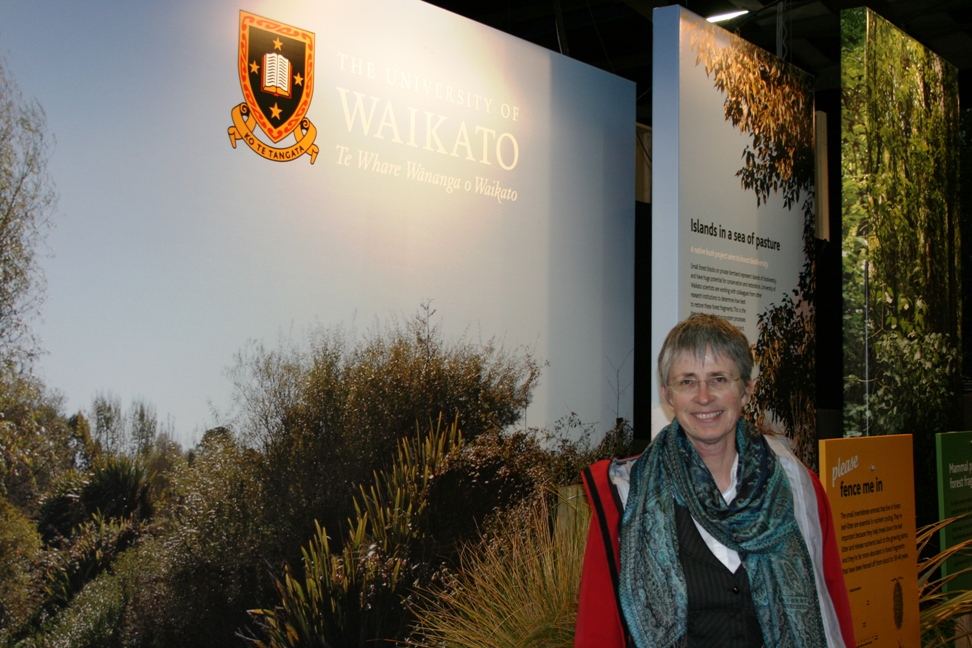
And a BIG thankyou to Michelle Armstrong for the photos 🙂
Darcy says:
Regarding the “Back end products” of cows, are you aware of plans to introduce dung bettles and what the progress might be? I read this story in the herald and thought it would be a productive move.
http://www.nzherald.co.nz/environment/news/article.cfm?c_id=39&objectid=10532981
Alison Campbell says:
I hadn’t read that – have been flying out the door the last couple of days & getting back late, so the paper has gone unread 🙁 But it sounds really interesting. I remember the same idea getting an airing a few years ago now & thinking, gosh, it would be good to have something cleaning up the paddocks! Or our back lawn, when I had those cygnets crapping all over it 🙂 Swan poo is like long soggy green cigarettes, & leaves interesting splodges on your clothes when you inadvertently sit on it. Or – as one rather arty press photographer did – lie on it while attempting an interesting shot of Swan Girl & brood. (I did warn him!)
Certainly the fact that they eat only dung would suggest that the beetles shouldn’t pose a threat to other organisms; as the researcher says, even if they did swap the sort of dung they eat, it’s still dung!